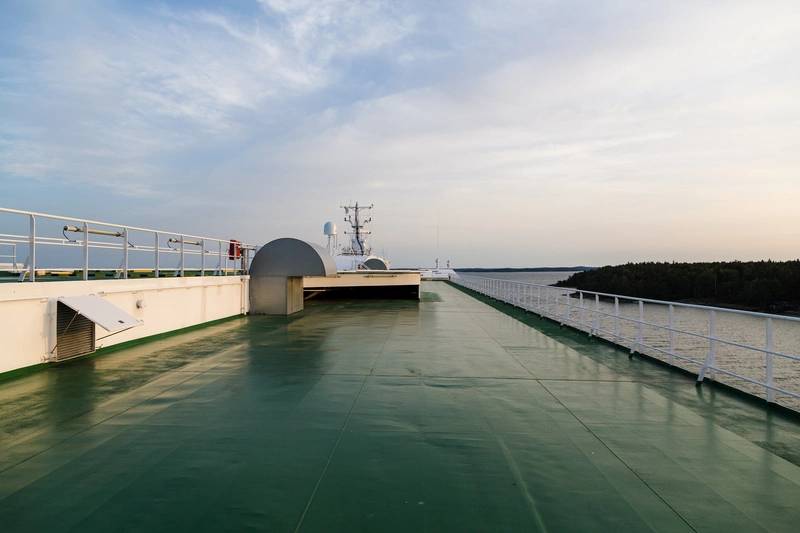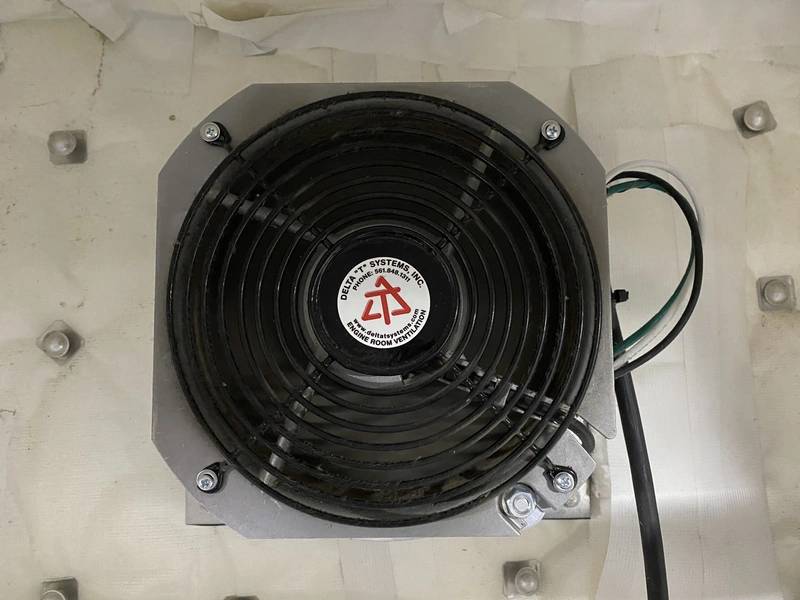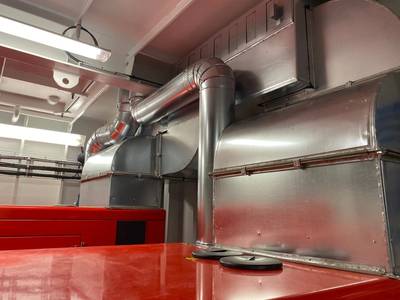What to Keep In Mind When It Comes to HVAC
Heating, ventilation and air-conditioning (HVAC) systems keep you cool in the summer and warm in the winter. That’s the simple explanation. It does not encompass the complexities of what needs to be done to assure the all-important continued conditioning of the air in your vessel.
The systems installed in vessels today can run the gamut from static vent scoops that force air into an area to a raw water chiller system whose workings take up the same amount of space as a 40-foot cargo container. The equipment is there to meet the need of the end user. Selecting the right system will come down to the budget, the vessel, the long/short term needs and the amount of hands-on maintenance the user can provide. No system is foolproof, and any system placed into the mostly saltwater environment that is found on seagoing vessels will need its share of upkeep.
Modern equipment is controlled and regulated using circuit boards. Small on-board processers in the equipment that can regulate the operation with an efficiency that will leave the inventor of the original swamp cooler sweating in envy. With great technology comes great responsibility. The units work efficiently and help control the conditions on board if they are installed by certified professionals and placed in an area on the vessel that allows for protection and regular access to inspect and maintain them.
The vessel type is key to the equipment needed. A weekender on a 30-foot trawler is not going to require a commercial chiller unit when smaller self-contained units are readily available stemming from the recreational vehicle market and adapted for use on a small boat. Here a small self-contained unit consisting of a compressor, evaporator, coils, blower and electrical components can be made to fit a cabinet under a bunk or seat and keep the space comfortable on an average day. This unit, if installed correctly, can be easy to access for maintenance and will also be more economical.
The builder of a new crew transfer vessel (CTV) for the offshore wind market emerging in the United States will be looking for something more robust. With the importance placed on passenger and crew comfort for the offshore commute to the turbine, a reliable system with enough power and efficiency to cool or heat the spaces while being economical to purchase, install and maintain will be the target. Units that use raw water to provide the heat transfer process will not be what the average CTV builder will look for, most will follow the trail blazed by workboat construction and install split systems. Here the condenser unit can be in one area, such as machinery spaces or the exterior deck, and the evaporator/s are located in the space to be cooled. On the smaller and space conscious CTVs the machinery spaces are occupied by critical machinery and condensers will be placed on an upper exterior deck and resemble the units seen at apartments and homes the world over.
 Air vents on the deck of a car ferry (© Vilhelm / Adobe Stock)
Air vents on the deck of a car ferry (© Vilhelm / Adobe Stock)
Chief Engineer Chris Larsen, who has been sailing commercially for 16 years, the last six while holding a Chief Engineer Unlimited, said domestic units that have some level of corrosion protection installed (stainless steel housings, protection for internal components from seawater or spray) will still have a diminished working life at sea. These units are seen on many offshore support vessels (OSV) working the fields of the Gulf of Mexico. Larsen commented that marine environment corrosion and improper maintenance are prevalent issues found on HVAC systems in a marine environment. Present day circumstances and supply chain issues could cause these types of issues to escalate, where before the ease of finding a whole new unit to replace the faulty one and get back underway was simpler. Preventative maintenance as specified in the OEM manuals done by, if not certified then trained individuals would help prolong the life of components in the marine environment. Taking a unit that was built to be installed outside of a home and bolting it to the deck of a vessel will not make for a crew that stays cool in summer and warm in winter.
Raw water, in the case of a marine environment, refers to that most abundant resource: salt water. Salt water is abundant and corrosive to metals. In a raw water supplied chiller system, the salt water is used to conduct the heat transfer. A chiller, usually located in the engine room, will heat or cool the water and then pipe it to the air handlers located in various spaces where the air is cooled or heated and pushed into the space by the air handler. These systems work well on larger vessels where space is not so much at a premium. They also allow for more air handlers being fed from a single chiller unit where distances are less of a concern if there is flow through the insulated pipes and a large enough horsepower chilled water pump. I recall a saltwater chiller system installed on a South Florida research vessel of 100 feet in length during a period of modernization. The chiller plant was built on the upper deck into a custom-built aluminum box of about 10 feet long by 4 feet deep and 7 feet tall. This worked around the lack of space in the engine room and used a larger seawater pump to lift the raw water from the hull sea chest to the upper deck, close to 20 feet. The cooled or heated water was then pumped to 17 different air handlers, in this case split wall units, for the accommodations and common areas of the vessel. The engineering department had to make sure their preventative maintenance was up to date on these units to help ensure the system kept running without downtime. The regular inspection and scheduled maintenance of a system will prolong its useful operating life.
Small boats in the 25- through 40-foot range can also explore the options of an engine driven HVAC system. Coming back around to the common theme that boats always lack enough room, this system uses the main propulsion package to provide power to the compressor, which is mounted to the front of the engine. The raw water feed can be siphoned off the pickup for the main engine prior to where it enters the main engine to provide cooling. The condenser is also low profile, and most would be in the engine space mounted above the water line, but not so far as to cause the pump to have to work harder. The cooling units are usually set up as low profile to be easily mounted behind a bulkhead or below a decking and feed cooling or heating to the space through four to six vents. Heating in these units uses coolant from the engines to help the efficiency of the internal heating coil and generate the heat to warm the space. The system can be set up to use both heat and cool at the same time in a de-humidification effort.
The systems all need to be maintained. Raw water coming in through the hull must be filtered through a particulate strainer in the sea chest. This needs to be inspected on a regular basis for obstructions such as sea life and sea growth. The engineers who design the system need to consider the amount of water that will be needed, so the decision will need to be made whether the feed will be dedicated only to the HVAC system or shared with other systems, such as a raw water toilet system. Then space and economics comes into play again, because larger pipes and stronger pumps will need to be used to ensure the water flows where it needs to without the two systems needing to compete. Systems such as a basic residential or commercial landside self-contained split unit, where there is no need for raw water to be used in the system, remain popular because these units are available in plentiful supply from manufacturers globally. The units should have some methods of corrosion protection to help prolong their operational life.
The type of system will always depend on the type of vessel and area of operations. HVAC systems provide cooling and heating, and their efficiency is determined by the power available for the units and their size, which is determined by the size of the vessel. Vessels that cater to passengers such as cruise ships and ferries need larger reliable systems because loss of cooling during the record heat waves being felt these days could result in injury to persons from the heat and loss of revenue. Increasingly, as the maritime industry continues to evolve, many companies are placing a greater emphasis on crew comfort in order to aid in retention of crews as the industry finds itself growing with a shrinking skilled workforce. Whether it’s large chiller plants, small self-contained units, or a window unit from a hardware store mounted in a porthole, these must work to cool or heat the area and be able to maintain operation in the working environments of vessels in fresh or salt water and in the rivers, bays, nearshore or ocean crossings that they are built for. No one wants lose their HVAC three days into a 12-day trip in the Solomon sea during the month of December and have to resort to opening port holes, building wind scoops out of cardboard, or sleeping and working on deck in little more than a pair of shorts until landfall is made in Australia where the nearest parts are.
 Engine room ventilation is a key component of any working vessel. (Photo: Eric Haun)
Engine room ventilation is a key component of any working vessel. (Photo: Eric Haun)














